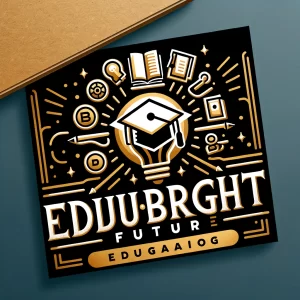Education is more than the acquisition of facts and figures; it is the key to understanding complex systems, collaborating across cultures, and solving problems that span global boundaries. As we prepare our children for this interconnected world, collaborative learning emerges as a pivotal teaching strategy that not only enhances academic achievement but also develops the social and emotional skills necessary for the workforce of tomorrow.
The Essence of Collaborative Learning
Collaborative learning involves grouping students together to explore new concepts, engage in problem-solving, and create projects that reflect their collective understanding and skills. This approach leverages the diverse perspectives and talents of all group members, encouraging students to communicate, negotiate, and lead. In a classroom where collaborative learning is the norm, walls are decorated with group project plans, and the air buzzes with the sound of active discussion and shared discovery.
Collaborative learning transforms the educational environment by creating a dynamic space where every student has a voice. It shifts the focus from teacher-centered instruction to student-centered exploration. This not only makes learning more engaging but also helps students develop essential skills like critical thinking, communication, and collaboration.
Technological Tools and Collaborative Spaces
Incorporating technology into collaborative learning environments has transformed traditional classroom dynamics. Smartboards, shared digital workspaces, and interactive learning apps allow students to research, create, and present in real-time. These tools not only facilitate more effective collaboration but also enable instant access to a world of resources, further enriching the learning experience.
Smartboards and Digital Workspaces
Smartboards and digital workspaces provide interactive platforms where students can work together on projects, share ideas, and receive immediate feedback. These tools make it easier for students to collaborate regardless of their physical location, breaking down barriers and fostering a more inclusive learning environment.
Interactive Learning Apps
Interactive learning apps engage students through gamification, real-time collaboration, and personalized learning experiences. These apps can adapt to individual learning styles, ensuring that every student can participate meaningfully in group activities.
Case Studies and Real-World Applications
To bring theory into practice, educators are increasingly turning to case studies that simulate real-world challenges. Students work in teams to navigate these scenarios, applying their knowledge in contexts that mimic future careers. Such practical applications teach resilience and adaptability—qualities essential for success in any field.
Simulating Real-World Challenges
Case studies allow students to tackle complex problems that require interdisciplinary knowledge and collaboration. By working through these scenarios, students develop a deeper understanding of the subject matter and learn how to apply their knowledge in practical, real-world settings.
Teaching Resilience and Adaptability
Navigating real-world challenges helps students build resilience and adaptability. They learn to handle setbacks, develop creative solutions, and work effectively under pressure—skills that are invaluable in today’s fast-paced, ever-changing world.
The Role of Educators in a Collaborative Setting
Teachers in these environments act as guides and mentors rather than sole knowledge providers. They create spaces that encourage risk-taking and mistake-making, both crucial for learning. By facilitating discussions and providing feedback, teachers help build a classroom culture where every student feels valued and empowered to express their ideas.
Facilitating Discussions and Providing Feedback
Educators play a crucial role in guiding collaborative learning activities. They facilitate discussions, ensuring that all students have an opportunity to contribute and that diverse perspectives are heard. By providing timely and constructive feedback, teachers help students refine their ideas and develop their skills.
Encouraging Risk-Taking and Mistake-Making
A key aspect of collaborative learning is creating an environment where students feel safe to take risks and make mistakes. This encourages experimentation and innovation, helping students learn from their experiences and develop a growth mindset.
The Long-Term Benefits
The benefits of collaborative learning extend beyond the classroom. Students learn to value different viewpoints, anticipate needs, and support others in achieving common goals. These experiences cultivate empathy, respect, and the ability to thrive in diverse teams. As businesses and organizations increasingly value soft skills alongside technical abilities, students prepared in such educational settings find themselves better equipped to lead and innovate.
Cultivating Empathy and Respect
Collaborative learning helps students develop empathy and respect for others. By working with peers from diverse backgrounds, students learn to appreciate different perspectives and develop a deeper understanding of the world around them.
Preparing for the Workforce
The skills developed through collaborative learning—such as teamwork, communication, and problem-solving—are highly valued in the workforce. Students who have participated in collaborative learning activities are better prepared to navigate the complexities of the modern workplace and to contribute meaningfully to their teams and organizations.
Looking Forward
As we look to the future, the goal of education should be to foster learning environments that blend academic rigor with collaborative opportunities, preparing students not just to succeed academically but to excel in life. Our commitment to this approach will shape thoughtful leaders, creative problem solvers, and responsible citizens who are prepared to build a better world.
Building Thoughtful Leaders and Creative Problem Solvers
By integrating collaborative learning into the curriculum, we can develop leaders who are capable of thinking critically, communicating effectively, and working collaboratively to solve complex problems. These skills are essential for addressing the global challenges of the 21st century.
Promoting Responsible Citizenship
Collaborative learning also promotes responsible citizenship by teaching students to value diversity, respect different perspectives, and work together to achieve common goals. These values are essential for creating a more inclusive, equitable, and sustainable world.
In conclusion, collaborative learning is a powerful strategy for preparing students for the future. By fostering a collaborative and inclusive learning environment, we can help students develop the skills and values they need to thrive in an interconnected world.
